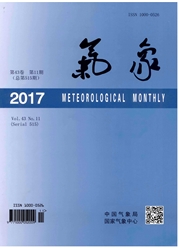

 中文摘要:
中文摘要:
2015年11-12月,全国接连发生七次大范围、持续性雾霾天气过程,其中,11月27日-12月1日的雾霾天气过程持续时间长达五天,成为2015年最强的一次重污染天气过程;12月1925日重度雾霾再次发展,影响面积一度达到35.2万km2.本文利用多种数据资料通过个例对比和历史统计详细分析了超强El Nino背景下雾霾天气频发的天气气候条件.其结果清楚表明:2015年11-12月欧亚中高纬度以纬向环流为主,东亚冬季风偏弱,使得影响我国的冷空气活动偏少,我国中东部大部地区对流层低层盛行异常偏南风,大气相对湿度明显偏大,并且大气层结稳定,对流层底层存在明显逆温.上述大气环流条件使得污染物的水平和垂直扩散条件差,因此在有一定污染排放的情况下,造成了重度雾霾天气过程的频发.由此,超强El Nino事件所导致的大尺度大气环流异常是我国中东部,尤其华北地区冬季雾霾天气频发的重要原因之一.
 英文摘要:
英文摘要:
During November-December 2015, seven strong fog and haze events persistently occurred over a large area of eastern China. Of them, the most severe one was from 27 November to 1 December, which lasted for five days or more. The second one was from 19 to 25 December 2015, which covered a large area up to 352000 square kilometers. Using multiple datasets, this study analyzes meteorological and climate conditions for these fog and haze events. The results clearly show that anomalous 500 hPa zonal circulation dominated over mid-high latitudes of Eurasia during November to December 2015, with weak East Asian winter monsoon, weaker cold air activities, and anomalous low-level southerlies over most areas of eastern China. Meanwhile,the relative humidity over eastern China was larger than normal, and the anomalous inversion in near-surface increased the stability of the surface air. The above atmospheric circulation conditions were unfavorable for horizontal and vertical diffusion of pollutants. As a result, severe fog and haze events occur frequently under the circumstance of pollutant emissions. Therefore, the large-scale atmospheric circulation anomalies caused by super El Nino events should be one of the most important reasons for these fog and haze disasters in eastern China, especially in North China.
 同期刊论文项目
同期刊论文项目
 同项目期刊论文
同项目期刊论文
 期刊信息
期刊信息
